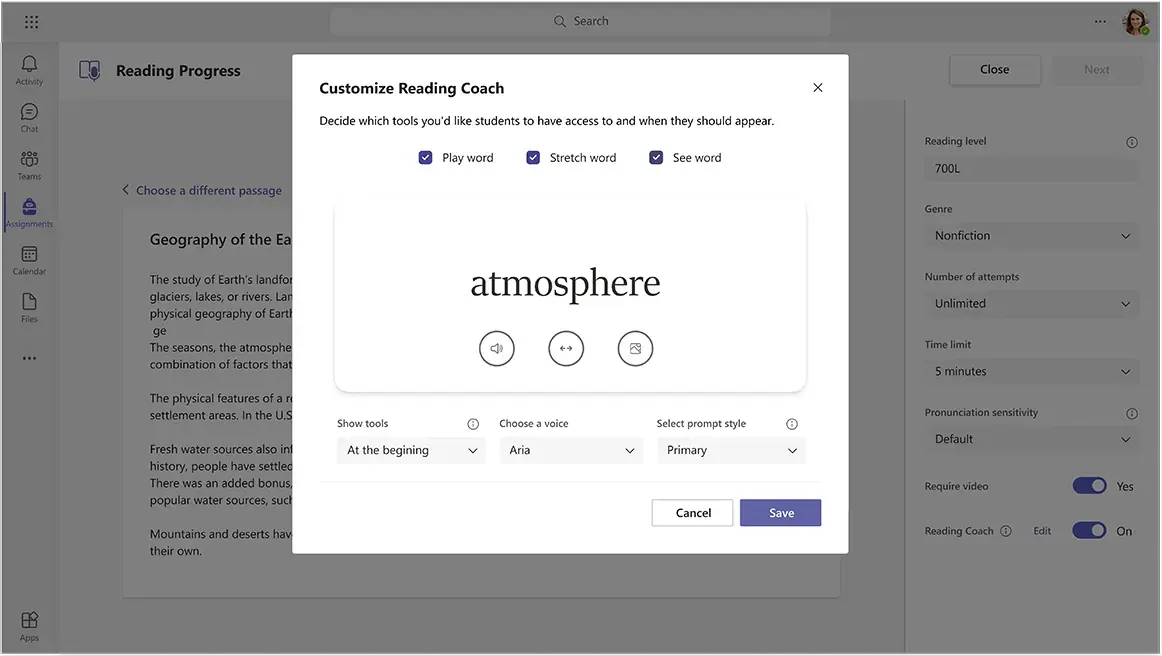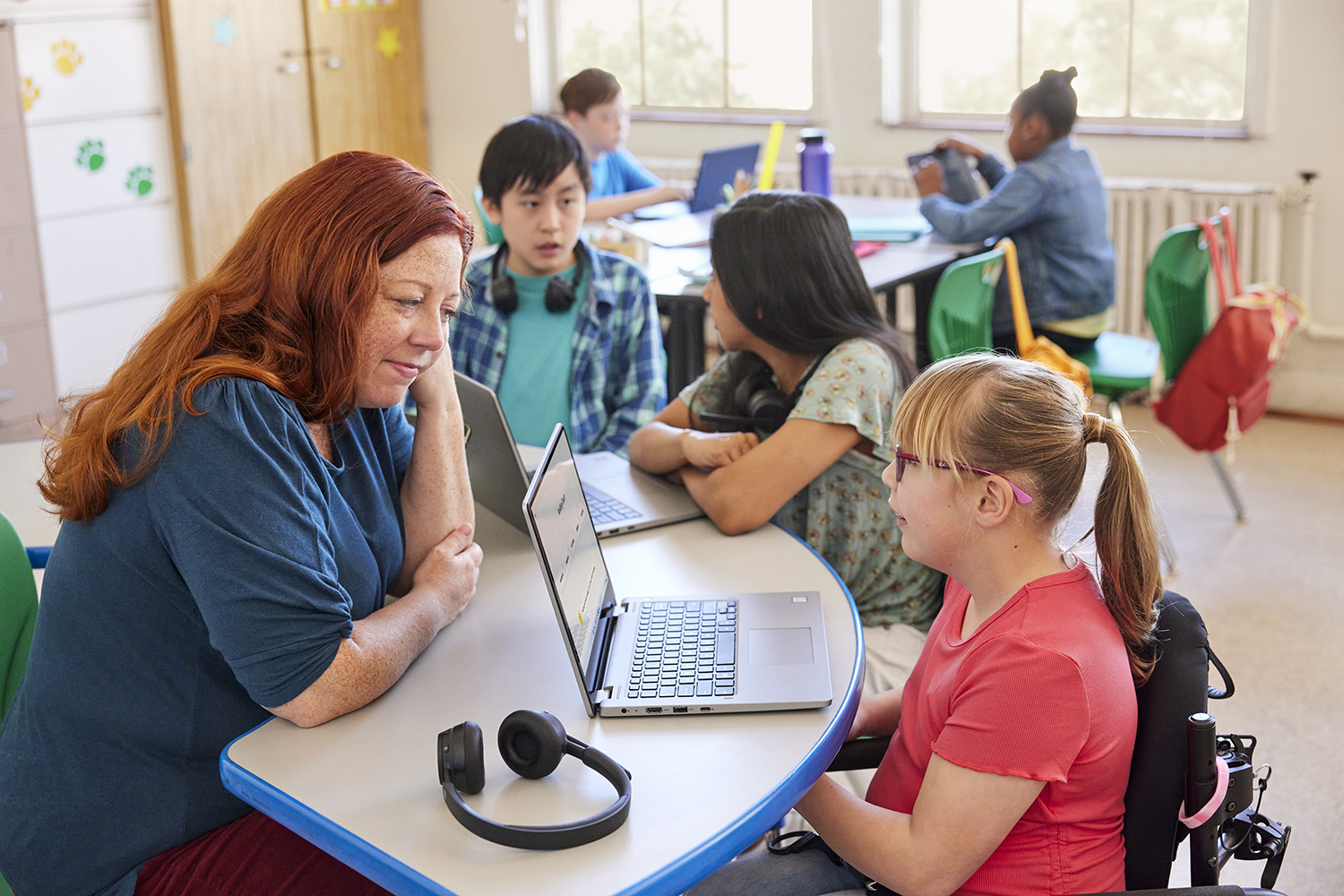What is International Literacy Day?
Today is International Literacy Day, a day designated by UNESCO1 to highlight and raise awareness of the importance and incredible benefits literacy has for individuals and society. Literacy means more than just learning to read and write at school. It can open lifelong opportunities and has been shown to improve everything from individual financial prospects to community health2.
Since 1966, UNESCO has designated a new theme each year that focuses on specific aspects of improving literacy. This year’s theme is “Transforming Literacy Learning Spaces,” and the goal is to “encourage educators to rethink the fundamental importance of literacy learning spaces to build resilience and ensure quality, equitable, and inclusive education for all.”
To celebrate this International Literacy Day, we’re sharing our latest Accelerating Learning paper, “Immersive Reading: Supporting Student Focus through Read-Alouds.” We’ll also highlight other literacy solutions that can help students learn, practice independently to become more fluent readers, and give teachers the insights they need to provide individualized support.
Digital environments as literary learning spaces
Learning devices today have built-in accessibility tools that enable every student to build, practice, and gain skills to have a voice and choice in their education journey. Since 2020, we’ve seen learning happen in various locations: in and out of schools, students’ homes, libraries, museums, outdoor spaces, and more. But no matter where they are, students are using devices as a hub for learning. This is why learning devices are considered one of today’s primary learning spaces.
That may sound strange for a device to be a “space,” but when leveraged effectively and designed with built-in accessibility tools, learning devices can provide many of the same benefits a classroom does—including access to teachers. When thinking about transforming literary learning spaces, we can shift our focus on developing learning applications and tools to help support students attain greater reading fluency.
Unlocking the text
One of the benefits of the increasing role technology has in learning is that when tools are built to support all learners, they provide unique ways for students to build skills and improve their education. One example of a transformational application that can facilitate reading and learning for millions of students is Immersive Reader. This tool can read text in 85 languages, provide translations in more than 60 languages, and is available across the Microsoft 365 suite of tools.
In our paper, “Immersive Reading: Supporting Student Focus through Read-Alouds,” reviewers compared the process a student would undertake to use Immersive Reader to read a document in both the browser and desktop application versions of Microsoft Word versus the process to enable and use read-aloud functionality in another document creation product. The comparison revealed that since Immersive Reader is built-in to the Microsoft 365 suite of applications, Immersive Reader was easier to access and safer to use. Other solutions required installation of a third-party extension and didn’t offer integrated translation.

Immersive Reader is not the only tool Microsoft has designed to support literacy and reading fluency. Another tool, Reading Progress, helps students practice their reading fluency by recording video and audio of them reading a passage out loud, then sharing their recordings with their teacher. Teachers can create Reading Progress assignments in Microsoft Teams and track student progress over time in the Insights tab. The tool can track reading fluency in more than 100 supported languages.

Reading Progress shows teachers which words students had difficulty reading.
A tool that works alongside Reading Progress is Reading Coach, a reading practice tool for students that automatically creates individualized exercises based on each student’s specific needs. Teachers can assign a reading passage in Reading Progress, and when a student records themself reading it, Reading Coach automatically identifies words that the student struggled with and creates additional practice opportunities. It also provides guidance on correct pronunciation and syllabification, shares visuals to help vocabulary recall, and positively reinforces students to help build their reading confidence. Additionally, it empowers self-directed learning and practice, giving more time for teachers to focus on the development of each student academically and emotionally.

Reading Coach provides options to help students practice challenging words.
When these tools are integrated into virtual and in-person learning, digital environments are transformed into literacy learning spaces that are versatile and engaging—whether students are practicing on their own, or with the guidance of a teacher.
Supporting literacy through partnerships
For those that have access, learning can (and does) happen anywhere. But much more needs to be done to advance digital equity so that more students can have access to high-quality educational tools and instruction. There are many groups working to increase literacy in different ways, and Microsoft is honored to work with them to bring resources and training to students and teachers.
Organizations like First Book work directly with communities to bring resources to children who need them most. Since 1992, First Book has distributed more than 225 million books, devices, and educational resources to programs and schools serving children from low-income communities across the United States and Canada. In collaboration with First Book, we created a M365 Literacy Tools Quick Start Guide (located in the Training and resources section) so you can learn how to use our free literacy tools and view educator-created videos that explain tool features in-detail.
Another organization making a difference is Made by Dyslexia. Dyslexia is a genetic difference that affects 1 in 5 people, sometimes causing dyslexics to have challenges with reading, spelling, and memorizing facts. Made by Dyslexia’s mission is to train every teacher and help every workplace to spot, support and empower every dyslexic mind. To help serve their mission, Microsoft has partnered with Made by Dyslexia to offer educators free online training with strategies from the world’s leading dyslexic schools.
As we highlight the importance of literacy and the spaces where learning happens, we also celebrate those who work to improve the reading fluency of students. The devices and spaces for learning are just tools to support the incredible efforts of teachers, principals, superintendents, and educators. Their dedication and skills make such a lasting impact by helping learners everywhere become strong and confident readers throughout their lives.
To read and download all of the Accelerated Learning papers and infographics, including “Immersive Reading: Supporting Student Focus through Read-Alouds,” visit the Learning Next page.

In support of International Literacy Day, the Microsoft Learn team has created the Literacy Skills Challenge! This is a free, gamified learning experience built into Microsoft Learn that introduces educators and school leaders to Microsoft’s literacy tools. Compete against your colleagues through the Skills Challenge Leaderboard and receive a digital certificate as an achievement for completing the challenge content.
By completing the Literacy Skills Challenge curated content, educators and school leaders can deepen their knowledge of the Microsoft solutions which help develop fluent readers and support personalized learning experiences.
The Literacy Skills Challenge kicks off today and lasts for 30 days.










